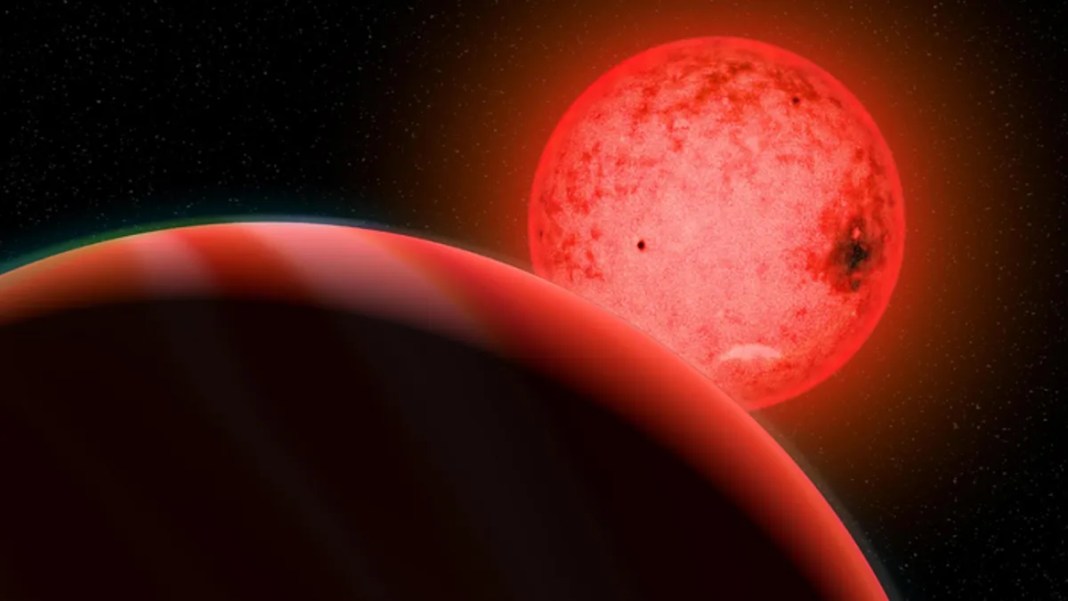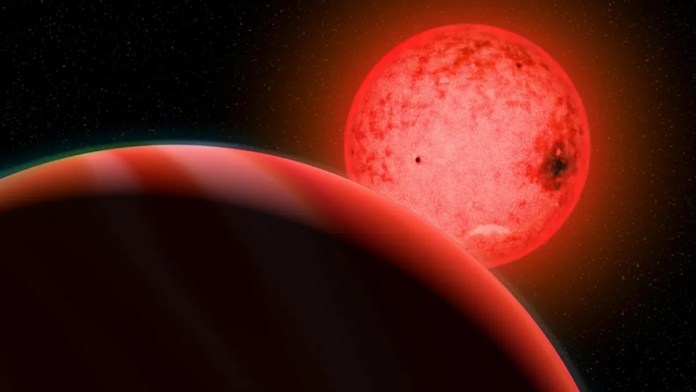Science & Technology, UK (Commonwealth Union) – A study by the University College London and the University of Warwick has found that stars with less than half the mass of our sun can host giant Jupiter-style planets, going against a popular theory of how such planets are formed.
Gas giants, such as other planets are produced from disks of material surrounding young stars. As indicated in the core accretion theory, they 1st form a core of rock, ice and other heavy solids, drawing an outer layer of gas once this core is sufficiently massive (roughly 15 – 20 times that of Earth).
The core accretion theory was a generally held view in explaining the formation of gas giant planets like Jupiter, but it was clear how it applies to the formation of smaller, rocky planets like Earth. Other theories, such as the “pebble accretion” model, have been proposed to explain the formation of these types of planets.
Researchers however indicated that low-mass stars contain low-mass disks where, models forecast, would not provide sufficient material to produce a gas giant in this way, or at least not as fast enough prior to the disk splitting.
The findings of the research were published in the Monthly Notices of the Royal Astronomical Society (MNRAS) and funded by the UK Science and Technology Facilities Council (STFC), where scientists viewed 91,306 low-mass stars, utilizing observations from the NASA Transiting Exoplanet Survey Satellite (TESS), and in 15 cases noted a decline in the intensity of the light corresponding to a gas giant moving in front of the star.
Researchers further indicated that 5 out of the 15 possible giant planets have since been verified as planets with the application of independent methods. One of these planets orbits a star that is a 5th of the mass of the Sun, which would have been unlikely as indicated in planet formation models.
Lead author Dr Ed Bryant of Mullard Space Science Laboratory at UCL, formerly the University of Warwick, who commenced the study as part of his PhD, says “Low-mass stars are better at forming giant planets than we thought. Our results raise serious questions for planet formation models. In particular, our detection of gas giants orbiting stars as low as 20% of the mass of the Sun poses a conflict with current theory.”
Co-author Dr Vincent Van Eylen of Mullard Space Science Laboratory at UCL says “The fact that, although rare, gas giants do exist around low-mass stars is an unexpected finding and means that models of planet formation will need to be revised.”
A potential interpretation is that gas giants do not produce via core accretion but through gravitational instability, where the disk encircling a star fragment into planet-sized clumps of dust as well as gas. If this is the case, low-mass stars will be capable of hosting extremely big gas giants, 2 or 3 times the mass of Jupiter. But, this was not considered a possibility, as the disks around low-mass stars do not appear to be big enough to fragment in this way.
Another explanation, the researchers say, is that astronomers have underestimated the how large the disc of the star can be, which means small stars can produce big planets through core accretion after all.
The paper had researchers attempt to determine how frequently giant planets were placed around low-mass stars, checking if this occurrence rate fit with what core accretion models would forecast.
Currently the researchers are attempting to verify if planets or even rule out 9 out of the 15 candidate planets they identified (5 have to date been confirmed as planets, with one false positive). These candidates can possibly be companioning stars or another possible factor for the decline in intensity.








